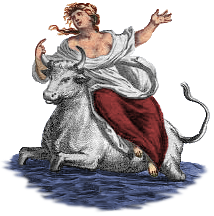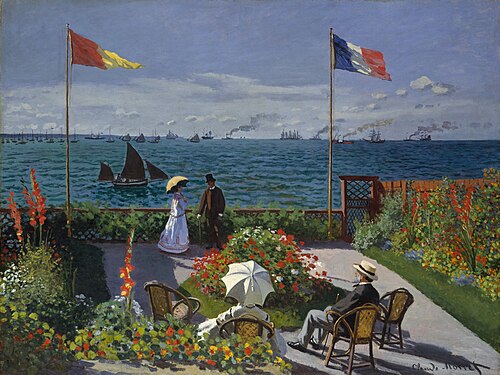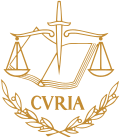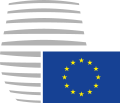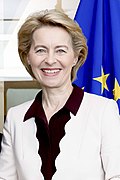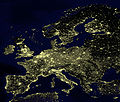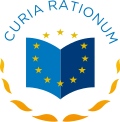Portal:European Union
Introduction
The European Union (EU) is a supranational political and economic union of 27 member states that are located primarily in Europe. The union has a total area of 4,233,255 km2 (1,634,469 sq mi) and an estimated population of over 449 million as of 2024. The EU is often described as a sui generis political entity combining characteristics of both a federation and a confederation. Containing 5.5% of the world population in 2023, EU member states generated a nominal gross domestic product (GDP) of around €17.935 trillion in 2024, accounting for approximately one sixth of global economic output. Its cornerstone, the Customs Union, paved the way to establishing an internal single market based on standardised legal framework and legislation that applies in all member states in those matters, and only those matters, where the states have agreed to act as one. EU policies aim to ensure the free movement of people, goods, services and capital within the internal market; enact legislation in justice and home affairs; and maintain common policies on trade, agriculture, fisheries and regional development. Passport controls have been abolished for travel within the Schengen Area. The eurozone is a group composed of the 20 EU member states that have fully implemented the EU's economic and monetary union and use the euro currency. Through the Common Foreign and Security Policy, the union has developed a role in external relations and defence. It maintains permanent diplomatic missions throughout the world and represents itself at the United Nations, the World Trade Organization, the G7 and the G20. Due to its global influence, the European Union has been described by some scholars as an emerging superpower.[needs update] In 2012, the EU was awarded the Nobel Peace Prize. In 2020, the United Kingdom became the only member state to leave the EU; ten countries are aspiring or negotiating to join it. (Full article...) Selected article€2 commemorative coins are special euro coins minted and issued by member states of the Eurozone since 2004 as legal tender. The coins typically commemorate the anniversaries of historical events or draw attention to current events of special importance. Eighteen variations of €2 commemorative coins have been minted. €2 commemorative coins have become collectibles. The basis for the commemorative coins derived from a decision of the European Council, which repealed the prohibition of changing the national obverse sides of euro coins from 1 January 2004 onwards. The face value of the coins, typically is less than their intrinsic value of between €3 and €12. The exceptions are San Marino and the Vatican City, where coins from the former are regularly sold for between €30 and €40, while coins from the latter are very rarely obtained for less than €100. Issued designs are made public in the Official Journal of the European Union. Selected picturePainting: Claude Monet The Garden at Sainte-Adresse is an oil-on-canvas painting by the French impressionist painter, Claude Monet. It was painted in 1867 in the French resort town of Sainte-Adresse, where Monet was spending the summer. The models were probably Monet's father Adolphe, his cousin Jeanne Marguerite Lecadre, her father Adolphe Lecadre, and perhaps Lecadre's other daughter, Sophie, the woman seated with her back to the viewer. The painting is composed with flat horizontal bands of colour, which were reminiscent of Japanese colour wood-block prints. The Garden at Sainte-Adresse is now in the Metropolitan Museum of Art in New York City.
Did you know?...that "Nocturne" is the Eurovision Song Contest winner with the fewest words, the Norwegian language original having only 25?  ...that the Eastgate Clock (pictured) in Chester is the second most photographed timepiece in the United Kingdom, after Big Ben? ...that "Kinek mondjam el vétkeimet?" received three perfect scores at the start of voting in the Eurovision Song Contest 1994 before ultimately coming in fourth, making Hungary the only debuting nation to lead the voting? Selected cityLisbon is the capital and largest city of Portugal. It is the seat of the district of Lisbon and capital of Região Lisboa (Lisbon Region). Lisbon municipality has a population of 564,477, and the Lisbon Metropolitan Area in total has around 2,800,000 inhabitants, the largest urban aglomeration of Portugal. Lisbon Region is the wealthiest region in Portugal and it is well above the European Union's per capita GDP average. Lisbon hosts two important European Union agencies namely, the European Monitoring Centre for Drugs and Drug Addiction (EMCDDA) and the European Maritime Safety Agency (EMSA). The CPLP (Community of Portuguese Language Countries), is also headquartered in Lisbon. General imagesThe following are images from various European Union-related articles on Wikipedia.
TopicsFeatured contentFeatured articles
Featured lists
Featured contentGood articles
CategoriesRelated portalsAssociated WikimediaThe following Wikimedia Foundation sister projects provide more on this subject:
Discover Wikipedia using portals |



